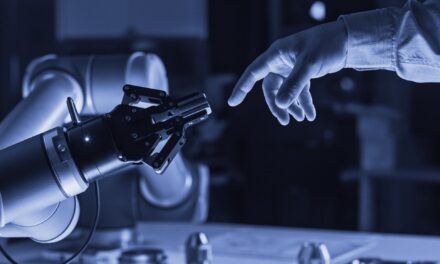In the ever-evolving landscape of industrial systems, a wave of innovation is propelling businesses to delve into the uncharted territory of edge IoT and artificial intelligence of things (AIoT). As the demand for real-time data processing intensifies, companies are harnessing the potential of edge IoT and AIoT to bring about a paradigm shift in the way industrial systems operate. By moving data processing closer to the source, they are successfully alleviating network congestion and bolstering the responsiveness of these systems. Here, Stephen Hayes, managing director at automation and control technology specialist, Beckhoff UK, explores the possibilities of edge IoT and AIoT.
Swedish philosopher Nick Bostrom once said, “machine intelligence is the last invention that humanity will ever need to make.” The integration of artificial intelligence (AI) decision making, alongside communication and data analysis, has the potential to transform the way manufacturers understand machinery.
IoT and AI are current technological trends that have garnered significant attention within the industrial landscape, owing to the need for industrial systems to seamlessly adapt to dynamic environments. When fused together, the role of edge IoT and AIoT becomes all the more pivotal. Here, the IoT facilitates the interconnection of devices, enabling the exchange of signals akin to a nervous system’s functionality. While AI serves as the cognitive center, integrating data before analysing and employing it to make informed decisions that govern the entire system.
Cutting edge tech
In many cases of AI integration, actions must take place locally to act fast. For example, if the AI system receives an alert that there is machinery malfunction, it might opt to halt the machine immediately to prevent product harm. To avoid latency issues, the AI system is integrated at the edge, instead of the cloud, resulting in quicker machine shutdown and a reduced likelihood of product damage.
This principle also applies to process performance optimisation, including the speed or movement of a machine. An AI system situated at the edge can transmit directives to equipment for performance improvements faster than from the cloud.
For instance, imagine a manufacturing facility where every machine communicates its health status, productivity metrics and potential maintenance needs in real time, allowing for predictive and preventive actions that significantly reduce downtime.
Or a smart energy grid that optimises power distribution based on real-time consumption patterns, enhancing efficiency and sustainability. These scenarios, once the stuff of science fiction, are swiftly becoming reality thanks to the merging of edge IoT and AIoT.

Integrating the AIoT
To incorporate AIoT on the edge, plant managers need to develop an offline AI model. This model should subsequently undergo training, by employing pre-existing datasets to enhance its performance and ensure alignment with predetermined standards and criteria. Once satisfied, plant managers can export the model and implement it online, where it interfaces with fresh, real time data streams.
Testing the model on stored data, which has already passed the training stage, is a completely different matter compared to applying it online. This is because real time data has not been filtered or categorised and each set, that arrives at different times, creates an information mess for the AIoT.
Therefore, technologies that facilitate the integration of AI into industrial processes and machinery are required before the model can be used by the AIoT. Programmable logic controllers (PLCs) and industrial PCs are feasible options, as they can serve as edge computing devices. These edge devices can host AI models and algorithms, allowing data analysis and decision making at the edge of the network, without the need to rely solely on centralised cloud resources.
In fact, Beckhoff’s TwinCAT software platform is commonly used for programming and configuring their PLCs and industrial PCs. This platform supports the development and deployment of AI and machine learning algorithms, enabling the creation of AI-powered applications within industrial environments.
As the demand for real-time data processing intensifies, this allows companies to harness the potential of edge IoT and AIoT in their applications — be it for predictive maintenance, quality control or the optimisation of production process purposes.
For more information about Beckhoff’s TwinCAT and other modular automation software platforms, visit www.beckhoff.com.




